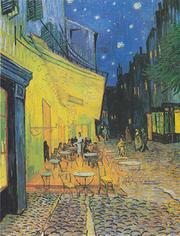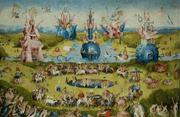The Presence of Absence & the Absence of Presence: War & The Holocaust
BY K Shabi Updated 16 Apr 2021 PUBLISHED 31 May 2014
What is the presence of absence and the absence of presence? Philosopher Jacques Derrida's metaphysical concept of the absence of presence is by definition inconceivable and difficult to trace. Sometimes we can begin to find meaning in the incomprehensible when we view it through our own lens of personal experience. At the end of the Holocaust documentary Engineering Evil (2011), Michael Berenbaum of the United States Holocaust Memorial Museum shares a meaningful personal account and his own take on Derrida's postmodern deconstructionist philosophy, giving deep new meaning to the phrase "the absence of presence."
Death & the Holocaust: The Presence of Absence and the Absence of Presence
You come to Sobibor and it's empty. You can barely imagine or fathom what is there. But that absence shows a presence. The ghosts are there, the images are there, the souls are there, the evil is there, and the magnitude of what happened is there, even if it's unseen.
If you look today at the sites of destruction, there is a paradox. It is the presence of absence and the absence of presence. You see something, and what you see is also what's not there. And if you don't see something, then that looms present for you in an extraordinary way." Michael Berenbaum, Engineering Evil (2011)
What is the meaning of the absence of presence? For Berenbaum, the meaning of the presence of absence becomes clear only after the experience of great personal loss, in his case with the death of his father. As Berenbaum states, "My father's absence loomed larger than anybody present." Using his own experience of grief as a jumping-off point, Berenbaum begins with a personal interpretation of the meaning of the presence of absence, but then moves beyond the personal by relating that experience to his visit to the site of the former death camp Sobibor.
Berenbaum calls Sobibor a "site of destruction," a place of death and war, of collective trauma: what we can interpret as a place of such grief, devastation and loss that transcends beyond the personal, to a social and cultural level. Though abandoned and seemingly deserted, for Berenbaum the grounds of Sobibor are full of lost ghosts, images, and souls. For Berenbaum, Sobibor and places like it - sites of collective trauma - are overflowing with the presence of absence and the absence of presence, leaving visitors filled with the same empty feeling he felt staring at his father's empty chair at the dinner table.

The Pianist and the Meaning of the Absence of Presence
Michael Berenbaum's interpretation of "the presence of absence" adds another layer of meaning to the final scene of Roman Polanski's World War II Holocaust film The Pianist (2002). In the movie's closing sequence, shortly after the end of the war Władysław Szpilman accompanies his friend to the site of a POW camp he passed through just a few weeks earlier. Even though only a short period of time has passed, no trace of the former POW camp remains. The fences and walls once lined with prisoners have all been hauled away, dismantled and removed, with only a natural and nondescript blanket of green grass remaining. In disbelief Szpilman's friend murmurs, "It was here, I'm certain of it," but any outward evidence to support his claim has disappeared, mysteriously or not.
PJ Harvey's "On Battleship Hill" Meaning: Presence of Absence & the Trace of Thyme
PJ Harvey also seems to touch on Derrida's concept of the absence of presence and the presence of absence in the Let England Shake track "On Battleship Hill." Visiting another European site of destruction left behind after a World War, Harvey tours the "caved in trenches" of a deserted battlefield now overgrown with wild thyme.
Even now, 80 years later... Cruel nature. Cruel, cruel nature.
The land returns to how it's always been. Thyme carried on the wind." PJ Harvey, "On Battleship Hill"
The thyme here echoes Berenbaum's sentiment that if you sense something, you also sense "what's not there." A strongly scented herb, traditionally thyme has been used to cover up and clear out the smell of death and decay. As travel writer Ross Davies writes, during World War I thyme was even thrown in the trenches of Gallipoli, what Davies calls a "wild and lonely place" to visit even today. In PJ Harvey's "On Battleship Hill" song lyrics, the herb's fragrant presence masks and distracts from the true essence of the scene, a No Man's Land of many casualties and deaths.
Absence of Presence Meaning: Collective Trauma & Personal and Cultural Significance
What is the presence of absence? Sites of destruction and collective trauma are haunting specifically because as humans we feel as though there should be some eternal sign (or even just a trace) left behind to mark the scene with all the loss and pain that has transpired there. Instead, it seems as though sites of destruction and war quickly revert back to an unheimlich wild state of nature, therein perhaps revealing their true identities more so than disguising themselves.







